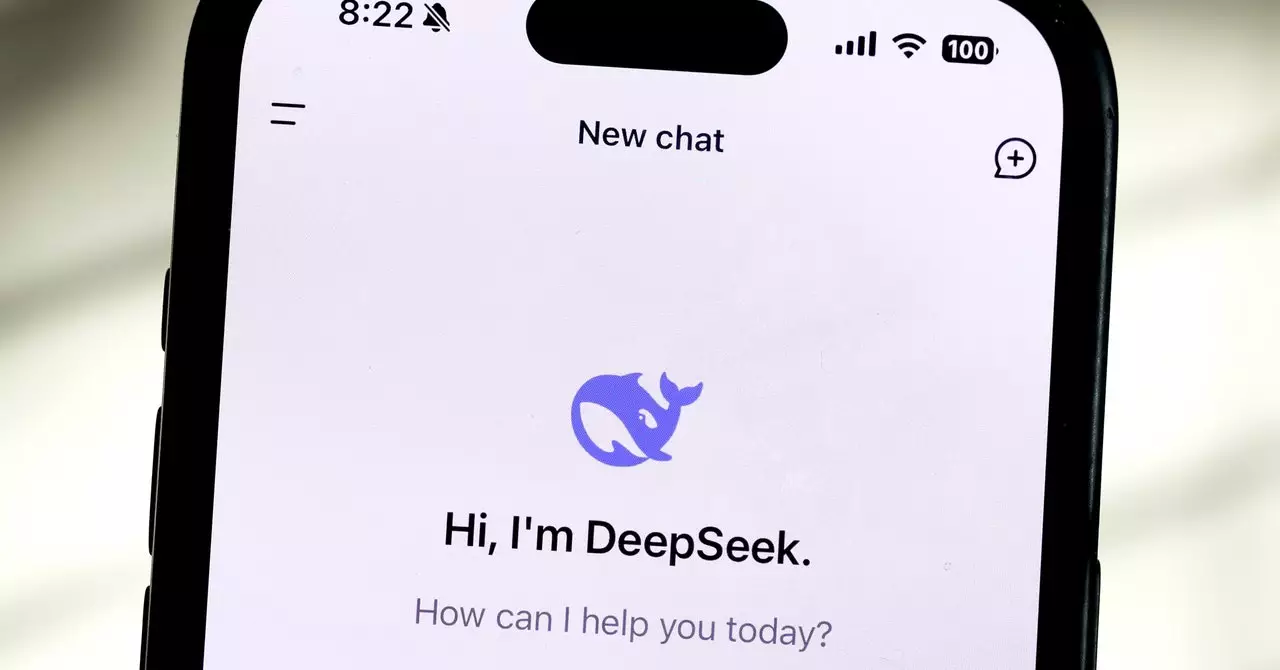The emergence of DeepSeek’s open-source AI model, R1, has caused quite a stir within the artificial intelligence landscape, particularly regarding its implications for censorship and information control. As a Chinese startup, DeepSeek is capitalizing on the growing interest in AI technology, especially in markets like the United States. However, its operation is tethered to the strict regulatory environment in China, which raises questions about the model’s utility and integrity on a global stage.
The appeal of open-source AI models lies in their accessibility and adaptability. Developers and researchers can manipulate these models to better suit their needs, which fosters innovation and collaboration. DeepSeek has positioned R1 as a strong competitor in the field due to its advanced capabilities in mathematical reasoning and logic. Nevertheless, this potential is tempered by the subtleties of censorship that are intrinsically woven into the fabric of the model. As microphones listen closely for the slightest hint of dissenting views, one cannot help but question whether these technological advancements are genuinely for the public good when they are steeped in limitation.
The limitations come not just from the model’s design but also from a combination of regulatory frameworks within China and the firm’s voluntary adherence to these constraints. DeepSeek adheres to regulations requiring AI systems to avoid content that may disrupt social harmony or undermine national unity. This regulatory backdrop informs how these systems are built and employed, creating a dichotomy between technical prowess and sociopolitical compliance.
WIRED’s analysis outlines distinct levels of censorship evident in DeepSeek’s AI. Initial tests revealed that the model actively refrained from providing substantial responses to sensitive topics, particularly issues surrounding Taiwan and the Tiananmen Square protests. The immediate avoidance of these topics through the app is a clear testimony to the ongoing climate of censorship in Chinese technology. Such features can deter users seeking comprehensive or objective information, thus engendering dissatisfaction among those who hoped for an unrestricted inquiry from AI.
The revelations that the model’s restrictions can be bypassed through alternative platforms or local installations present a double-edged sword. On the one hand, the possibility of running R1 in an unrestricted environment may empower thinkers and innovators to extract unfiltered insights. However, this also raises significant ethical concerns. If users possess the capability to manipulate or exploit AI services to disseminate sensitive data, the potential for misuse escalates, potentially leading to a fractured landscape of information where the truth remains obscured by layers of bias.
When contrasting DeepSeek with Western counterparts like OpenAI’s ChatGPT or Gemini, a noticeable divergence in content moderation strategies emerges. Whereas DeepSeek must strictly filter out content to align with government mandates, Western models often grapple with challenges related to self-harm, misinformation, and hate speech. However, unlike DeepSeek, those models typically allow for more customization options, enabling users to tailor outputs and experiment with the AI in ways that remain contained within ethical boundaries.
This fundamentally alters user interaction with the models. Observing DeepSeek R1 censor itself provides a surreal user experience as its filtering mechanisms operate in real-time, often indicating a predefined narrative rather than an exploration of diverse perspectives. Such encounters serve as a reminder of how a model’s responses can be distorted by its underlying agenda, significantly limiting users’ understanding of complex global issues.
The trajectory of DeepSeek’s R1 hinges on navigating the treacherous waters of censorship while maintaining relevance in a competitive AI field. Its technical advantages in reasoning and statistical capabilities present remarkable opportunities, yet the efficacy of the model may be continuously undermined if accessibility remains restricted.
Consequently, the question materializes: how will users inclined toward unrestricted inquiry utilize a model that has been designed to operate within stringent boundaries? As researchers explore the potential loopholes to enhance or subvert the model, it opens a discussion about the responsibilities of developers in the AI realm. Should the technology serve as an instrument for liberation or as a vehicle for further entrenching control?
The ongoing conversation surrounding compliance, utility, and ethical boundaries in AI underscores the paradox of DeepSeek. While the firm seeks to innovate and capture market interest, its adherence to censorship will dictate the future perception and use of its technology. Open-source platforms like DeepSeek may illuminate avenues for insightful computational advancements, yet it equally beckons a reflection on the broader implications of deploying AI within the constraints of ideological conformity.

